View from Coaley Peak
A patchwork of fields, lit by an ever-changing mosaic of light. I often stop at Coaley Peak, on the edge of the Cotswold escarpment, to take in this view towards the River Severn and on to the Forest of Dean. The area is managed by Gloucestershire Wildlife Trust and boasts a rich wildflower meadow (just behind the camera). Perhaps not surprisingly, evidence suggests that the spot has been significant to people for thousands of years – the Nympsfield Long Barrow, standing just along from the viewpoint, was used as a burial site in Neolithic times.
The walled garden, Lindisfarne
I spotted this gem of a walled garden from a high window inside Lindisfarne Castle, on Holy Island in Northumberland. It was a little oasis of colour on a grey, drizzly day. Castle tour done, I headed straight over to see it (under the beady eyes of three kestrel chicks, perched in a cranny in the castle wall). Sited on the former garrison’s vegetable plot, the garden was designed by Gertrude Jekyll in 1911, for her friend Edwin Lutyens, who was converting the castle into his holiday home. I’m always amazed at how such delicate-looking plants can thrive in such exposed places, albeit, in this case, with a little shelter from the garden wall.
Harebells in the rain
I was delighted to find these pretty harebells standing firm in the breezy rain atop the outer walls of Lindisfarne Castle. As well as brightening the view, they were a perfect subject for the Wildflower Hour bellflower challenge. If you haven’t come across it before, Wildflower Hour (Sundays, 8-9pm, on various social media) is a wonderful sharing of wildflower images taken in Britain and Ireland over the past week. Many of the pictures I took this month showed plants in their environment – in this case, the Northumberland coast. I especially enjoy photographs that capture a sense of place, a style often used by the late Bob Gibbons (1949-2024) – an exceptional nature photographer, especially of plants.
Urban kittiwakes
I just made it north-east in time to catch the end of the kittiwake’s breeding season, before the birds head back out to sea. Hundreds of these medium-sized gulls nest on the historic Baltic Flour Mills in Gateshead (now home to the Baltic Centre for Contemporary Art), comprising the world’s furthest inland kittiwake breeding colony. The viewing platform provided by the gallery affords fantastic close-up views of the birds interacting with their young, their constant ‘kitti-wake’ calls filling the air, as they come and go from the ledges.
Seabird stacks
A boat trip to the Farne Islands, off the coast of Northumberland, was certainly a highlight of the month. The rocky islands are impressive in themselves (I was very lucky to get a blue-sky day) but even more so in late spring and summer, when they host some 200,000 breeding seabirds. Kittiwakes and guillemots encrusted the dramatic rock stacks, puffins zoomed past the boat, wings beating impossibly fast, curious grey seals poked their heads above the water and Arctic terns were primed to peck intruders. The sight, sound – and smell – were exceptional, even with seabird numbers waning, at this, the tail end of the breeding season.
Copper beech
This colourful copper beech stands tall at the top of an old lane in Gloucestershire. Photogenic in every season, it catches my eye every time I walk by. The path is usually quiet, accessible only on foot (following the Cotswold Way) or horseback, but I imagine it was once well used to reach the woollen mill that now lies in ruin at the bottom of the valley. I wonder how many other travellers have looked up and admired this tree. Most copper beeches are cultivated forms of the common beech Fagus sylvatica – known as the queen of trees (the oak being the king) – though some are said to occur by natural mutation. Their striking foliage disrupts the ubiquitous green, making them popular (though not universally) in landscape design.
Young robin
You don’t often get the chance to capture a portrait of a wild bird with a phone camera, but this young robin is very at ease in my company, appearing almost every time I set foot in the garden, curious to see what I’m up to. Robins are well known for their tendency to shadow large mammals that might disturb the soil and unearth some tasty invertebrates. I wonder if this youngster will learn that, when I sit on this bench, cup of coffee in hand, no meal is likely to come his way. For the time being, he perches alongside me and treats me to a soft song, his throat pulsing gently, his beak barely ajar.




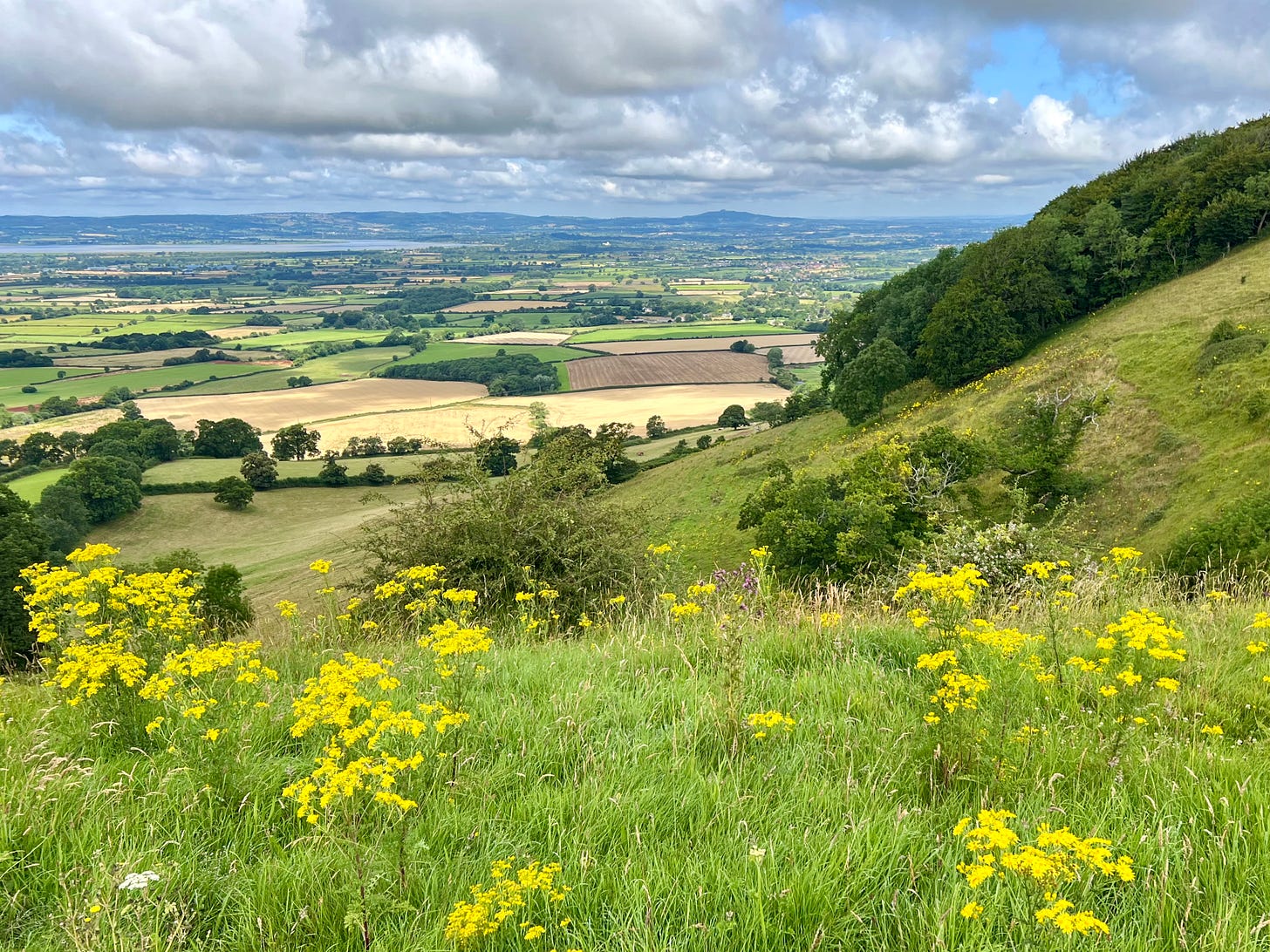
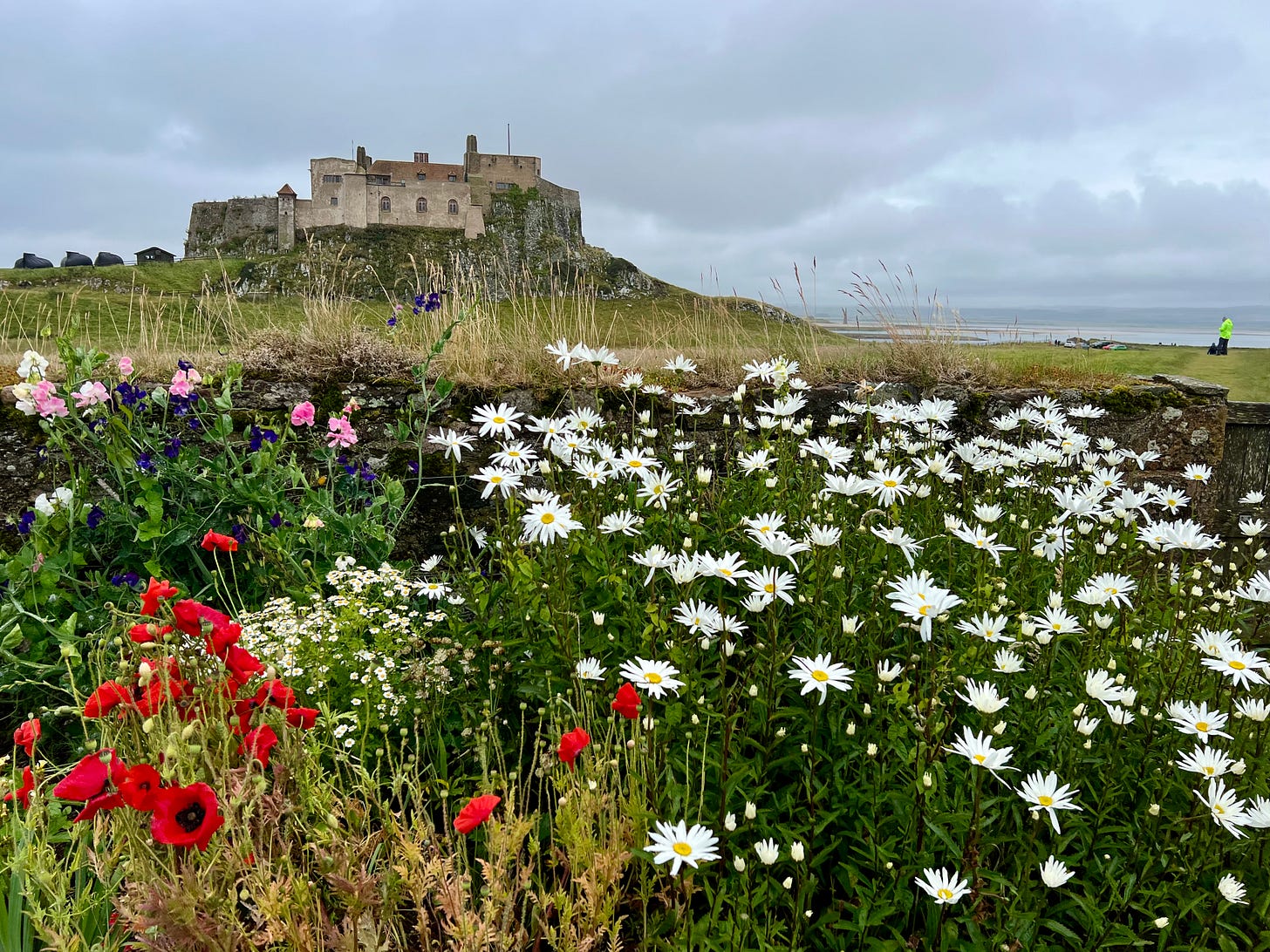

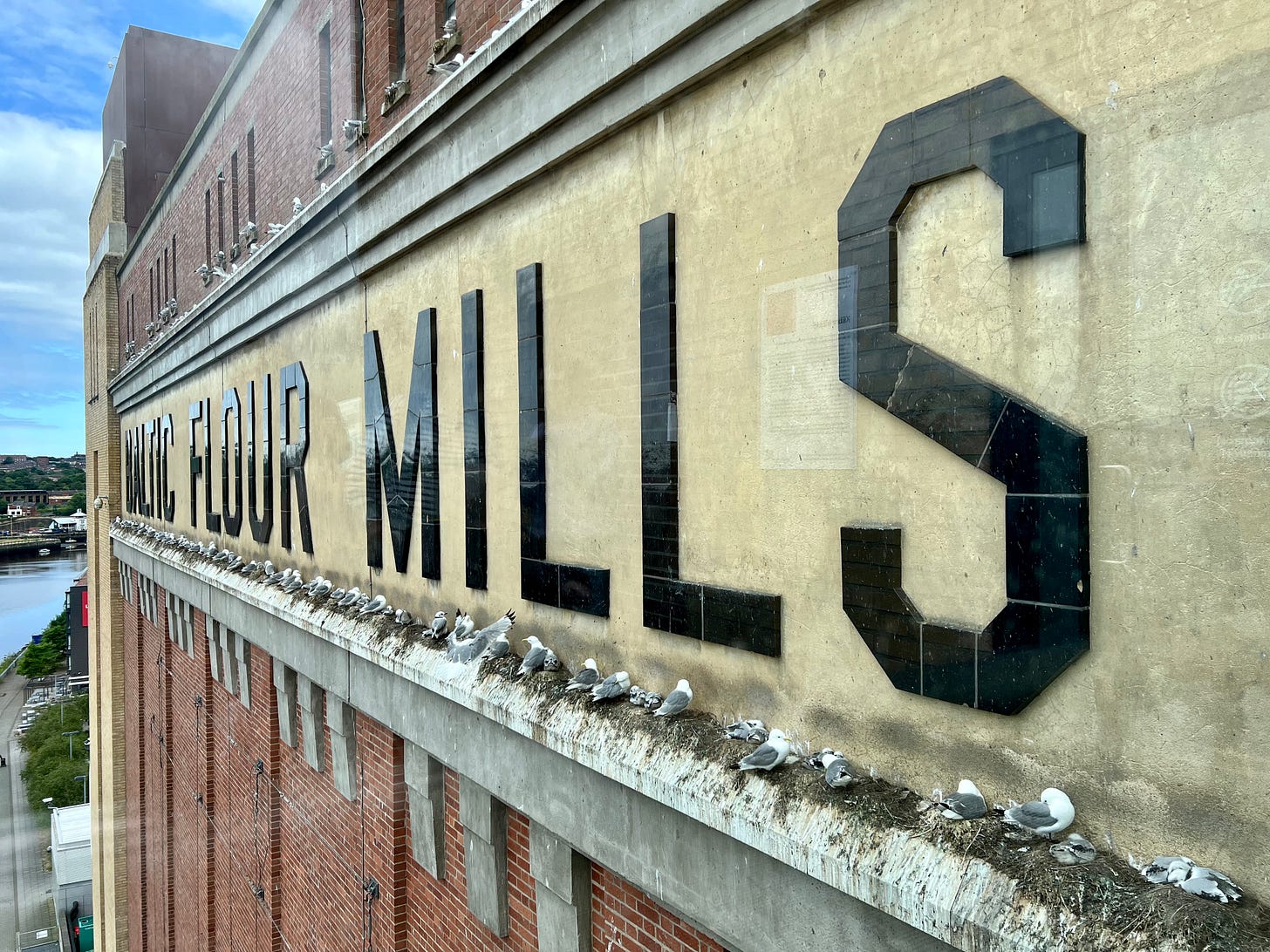
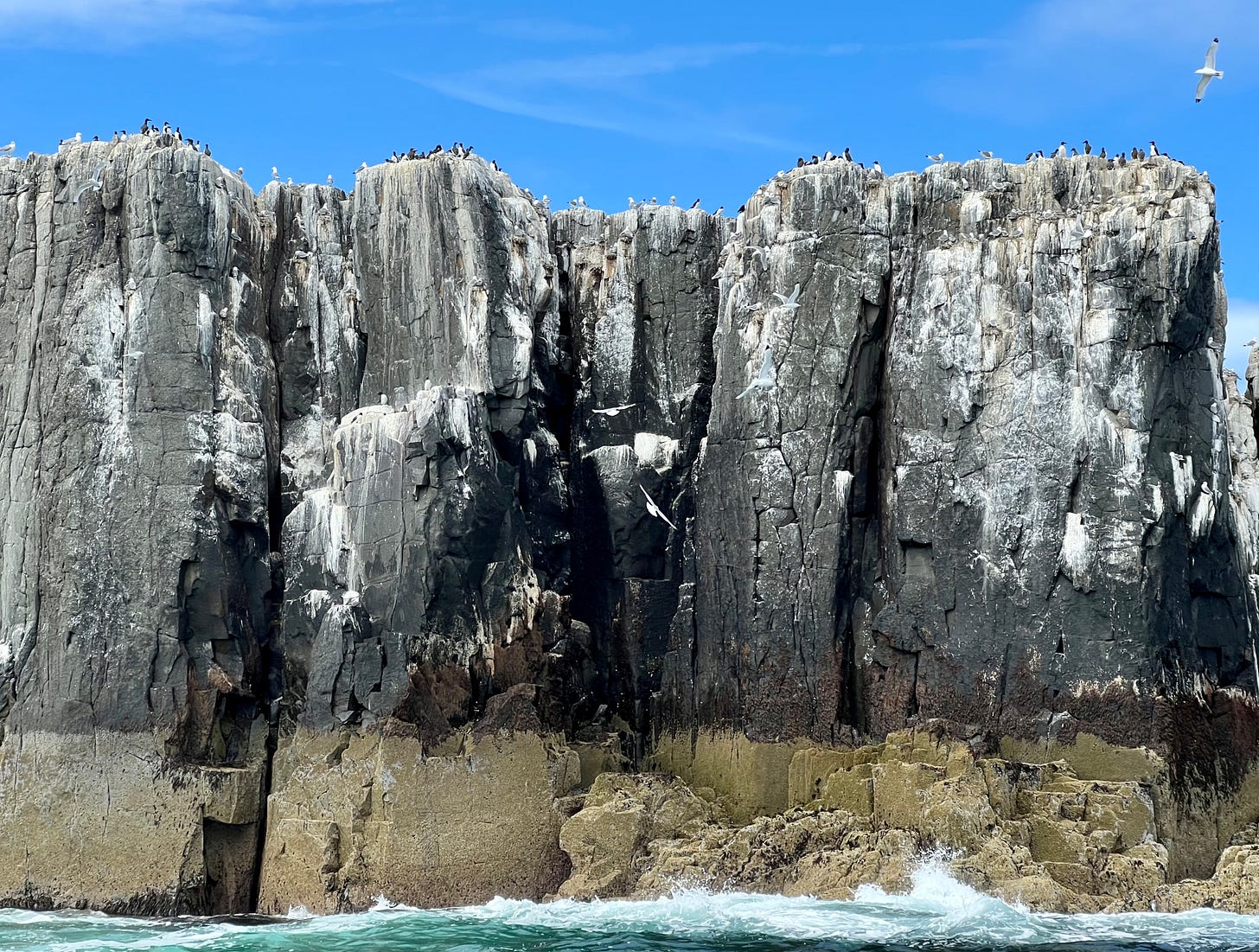
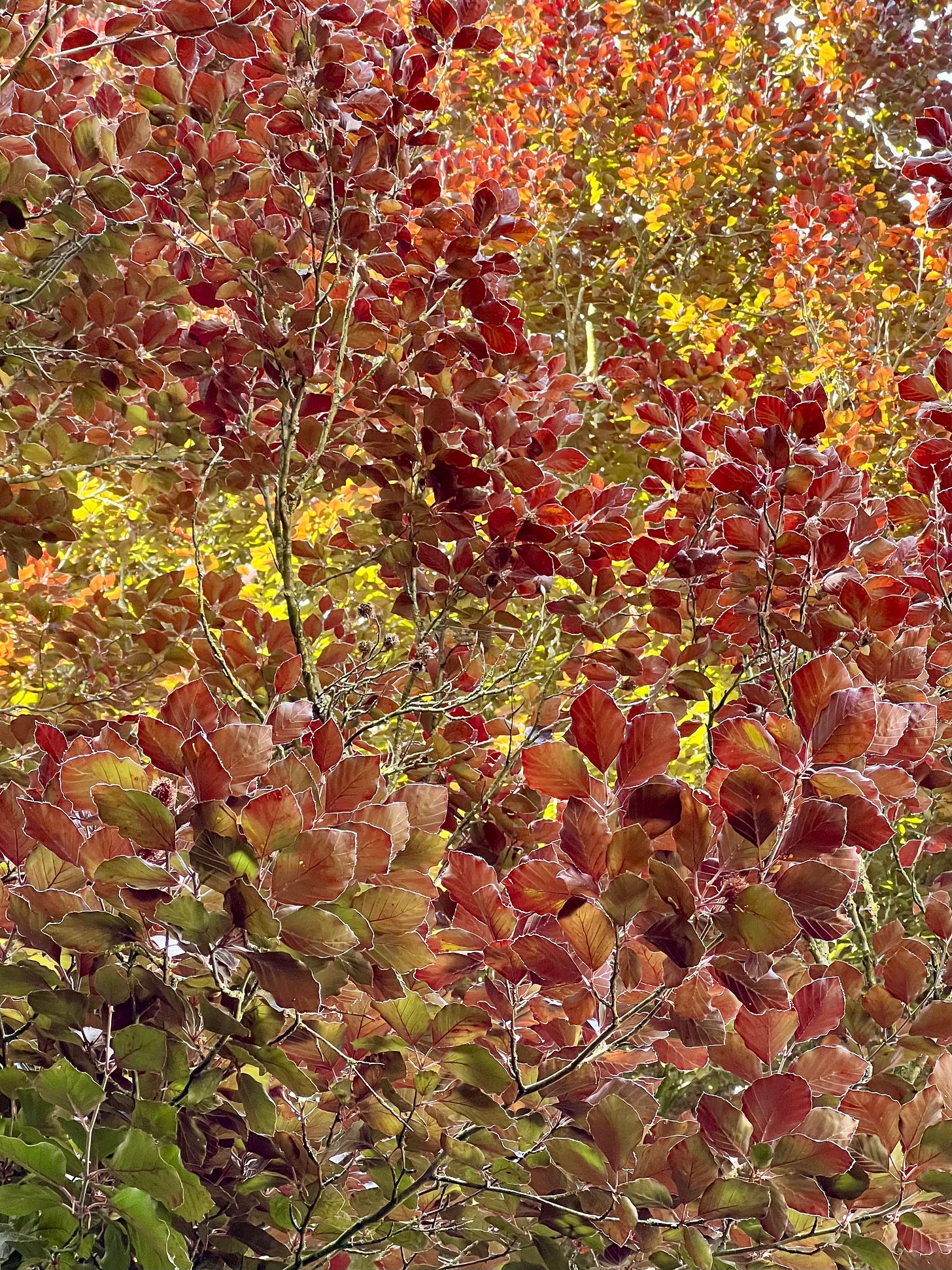

Gorgeous! I went to the farne islands today and lindisfarne is tomorrow! Can’t wait!
An enjoyable post thanks from another Tyne kittiwake fan ...